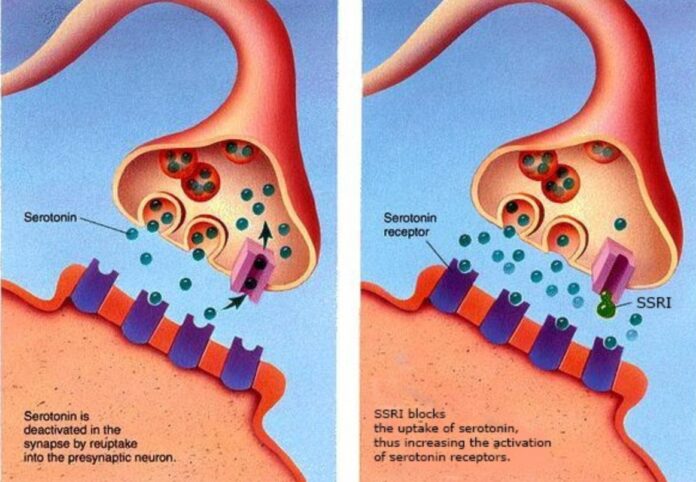Winter brings shorter days and colder temperatures, which leaves many people struggling with Seasonal Affective Disorder (SAD), a type of depression that occurs at a specific time of year, usually in the colder months. Understanding SAD is crucial, as it affects millions each year, disrupting lives and wellbeing.
What is Seasonal Affective Disorder?
Seasonal Affective Disorder is more than just the “winter blues.” It’s a subtype of depression that occurs at a particular time of year. The symptoms often start in the fall and continue into the winter months, sapping your energy and making you feel moody. Less often, SAD causes depression in the spring or early summer.
Symptoms of SAD might include feeling depressed most of the day (nearly every day), losing interest in activities you once enjoyed, having low energy, having problems with sleeping, experiencing changes in your appetite or weight, feeling sluggish or agitated, having difficulty concentrating, and feeling hopeless, worthless, or guilty.

The Causes and Impact
The exact cause of SAD isn’t fully understood, but it’s believed to be related to the reduced level of sunlight in fall and winter. This decrease in sunlight might disrupt your body’s internal clock and lead to feelings of depression. Reduced sunlight can also cause a drop in serotonin, a brain chemical (neurotransmitter) that affects mood, and trigger a drop in melatonin, which plays a role in sleep patterns and mood.
SAD can take a significant toll on your life, affecting your daily functioning, relationships, and overall sense of well-being. Understanding the causes and recognizing the symptoms are the first steps towards managing this condition.
Ways to Combat SAD
If you’re struggling with SAD, it’s important that you don’t just sit back and let it overwhelm you. Instead, you need to proactively use techniques and strategies to combat the underlying causes and also address the symptoms.
Since it’s often difficult to have the motivation to do anything when the symptoms of SAD hit, it’s important that you get ahead of it and have a plan that preemptively addresses it. At the very least, you need to have tools you can easily reach for when it flares up.
Here are several suggestions:
- Light Therapy: One of the simplest and most effective treatments for SAD is light therapy. This involves sitting near a device called a light therapy box, which emits bright light that mimics natural outdoor light. It’s believed to cause a chemical change in the brain that lifts your mood and eases other symptoms of SAD.
- Maintain a Regular Exercise Routine: Regular physical activity can help relieve stress and anxiety, both of which can increase SAD symptoms. Being more fit can make you feel better about yourself, too, which can lift your mood.
- Diet Adjustments: A healthy diet can help combat SAD. Some people with SAD crave foods high in carbohydrates, which can lead to weight gain. Instead, focus on a balanced diet with plenty of fruits and vegetables.
- Create a Supportive Environment: Surround yourself with supportive people. Share your feelings with friends and family; they might have suggestions for coping, or they may simply provide a listening ear.
- Seek Professional Help: If your symptoms are severe, you may need to find a therapist. Cognitive-behavioral therapy (CBT) can be effective for SAD. This type of therapy can help you identify and change negative thoughts and behaviors that may be making you feel worse and help you learn healthy ways to cope with SAD.

The Role of Therapy in Managing SAD
Therapy, especially CBT, plays a significant role in managing SAD. It can help you learn ways to cope with the disorder, understand and change the thoughts and behaviors that contribute to your symptoms, and develop strategies to prevent future episodes of SAD.
In therapy, you might learn to challenge negative thoughts about the winter months, manage stress more effectively, and find ways to maintain a positive outlook. Your therapist can also work with you to create a treatment plan that might include other therapies, such as light therapy or medication.
Seasonal Patterns and Diagnosis
Healthcare professionals diagnose Seasonal Affective Disorder (SAD) by looking for specific patterns in a person’s mood and behavior that change with the seasons. Typically, symptoms start in the fall and continue into the winter months, sapping energy and making individuals feel moody. To identify SAD, doctors may ask about a patient’s history of depression, especially if depressive episodes occur at a particular time of year regularly.
They also consider the length, severity, and the seasonality of symptoms, distinguishing SAD from other types of depression. Understanding these patterns helps professionals provide a targeted approach to treatment, ensuring those affected receive the most effective care.
Self-Help Techniques
For individuals experiencing SAD, integrating self-help techniques into daily routines can be beneficial. Practices such as mindfulness meditation can help calm the mind and reduce stress, while journaling offers a way to express thoughts and emotions, potentially uncovering patterns in mood that relate to the seasons.
Maintaining a consistent daily routine, including regular sleep patterns and meal times, can also stabilize mood. Exercise, particularly outdoor activities in natural daylight, can boost serotonin levels and improve overall well-being. These techniques empower individuals to manage their symptoms and contribute to a comprehensive treatment plan.

Medication Options
In some instances, when symptoms of SAD are severe and significantly impact daily functioning, healthcare providers may recommend antidepressant medications. Selective serotonin reuptake inhibitors (SSRIs) are commonly prescribed to treat SAD, helping to correct imbalances in brain chemistry associated with mood.
It’s crucial for patients to discuss the benefits and potential side effects of medication with their healthcare provider, ensuring an informed decision is made based on their specific health profile and severity of symptoms. Medication may be used in conjunction with other treatments like light therapy or counseling for a more holistic approach.
Prevention Strategies
Preventing the onset of SAD, especially for those who have experienced it in the past, involves proactive strategies. Planning engaging activities during the winter months can provide something to look forward to, countering the typical downturn in mood. Maximizing exposure to natural light, either by spending more time outdoors during daylight hours or arranging living spaces to allow more sunlight, can also help.
Additionally, healthcare providers may suggest vitamin D supplements if tests indicate a deficiency, as low levels of vitamin D are linked to depressive symptoms in some individuals. These preventive measures can mitigate the severity of SAD or potentially prevent it altogether, promoting better mental health through the winter season.

Adding it All Up
Seasonal Affective Disorder is a real and serious condition, but it’s also treatable. By understanding the symptoms, causes, and impact of SAD, you can better prepare to combat it. Whether through lifestyle changes, therapy, or a combination of both, there are effective strategies to manage and overcome SAD.
Remember, if you’re struggling with SAD, you’re not alone, and help is available.





![Calgary’s Hottest Neighborhoods for Luxury Homebuyers [2024]](https://thewashingtonote.com/wp-content/uploads/2024/04/Calgary-324x160.png)



